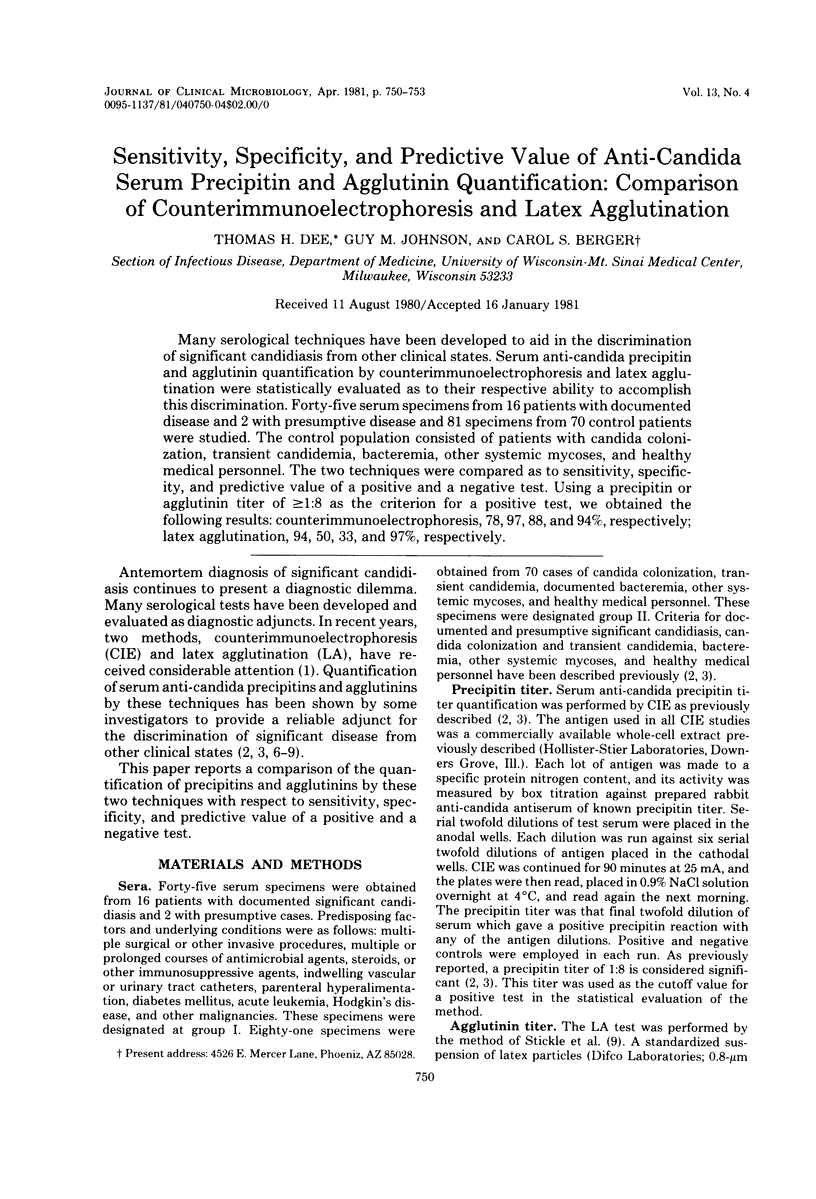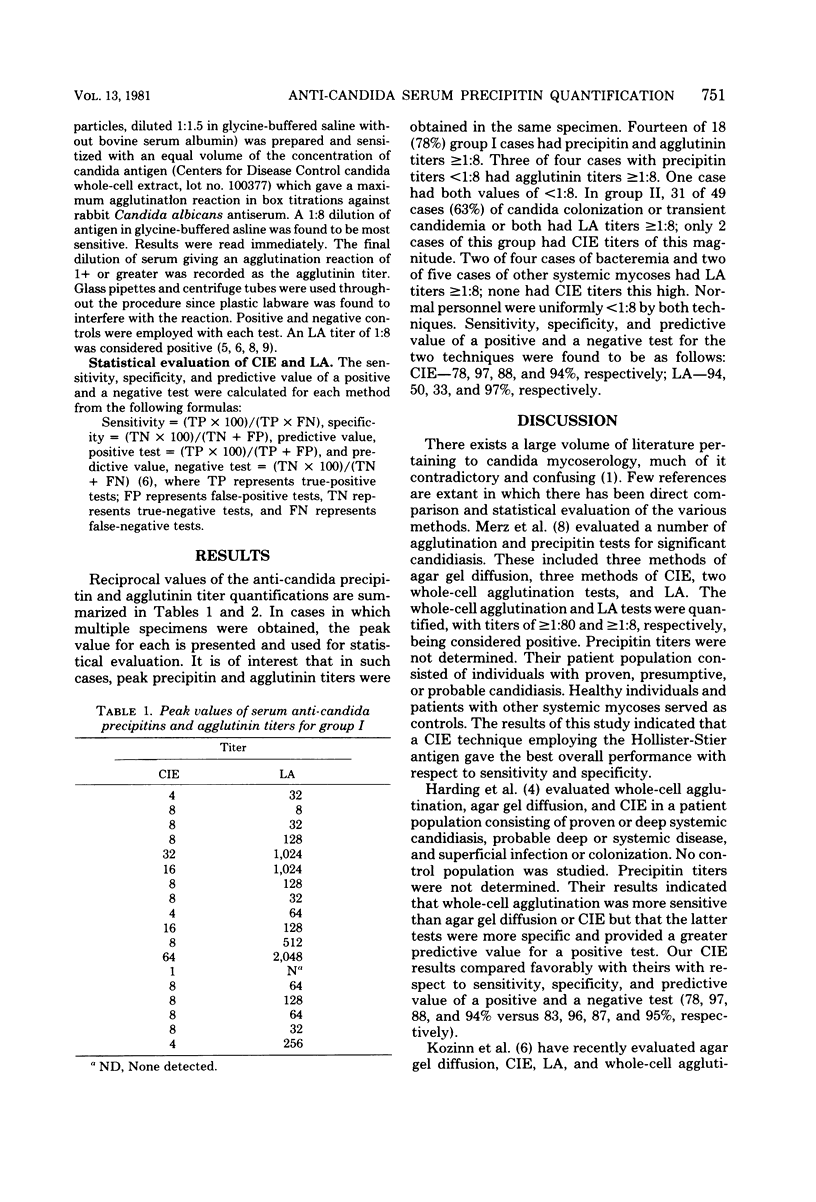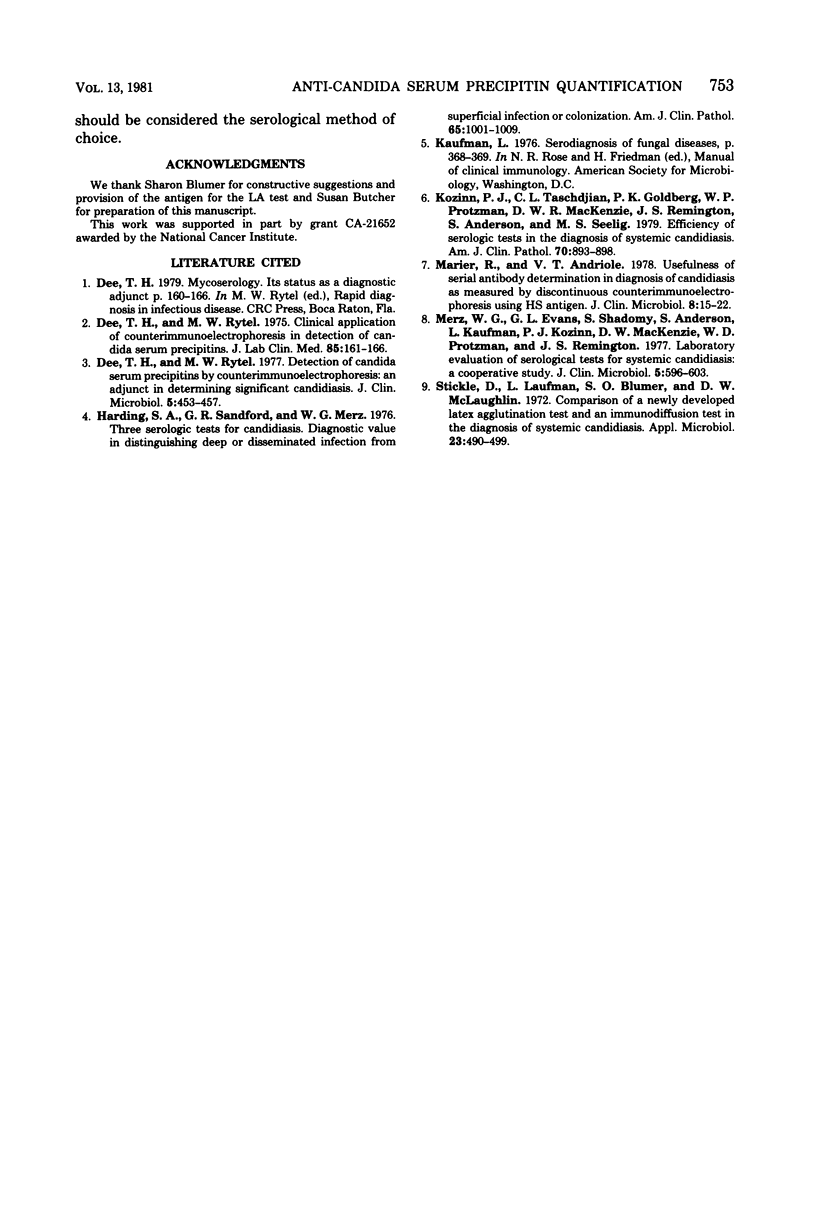Abstract
Many serological techniques have been developed to aid in the discrimination of significant candidiasis from other clinical states. Serum anti-candida precipitin and agglutinin quantification by counterimmunoelectrophoresis and latex agglutination were statistically evaluated as to their respective ability to accomplish this discrimination. Forty-five serum specimens from 16 patients with documented disease and 2 with presumptive disease and 81 specimens from 70 control patients were studied. The control population consisted of patients with candida colonization, transient candidemia, bacteremia, other systemic mycoses, and healthy medical personnel. The two techniques were compared as to sensitivity, specificity, and predictive value of a positive and a negative test. Using a precipitin or agglutinin titer of greater than or equal to 1:8 as the criterion for a positive test, we obtained the following results: counterimmunoelectrophoresis, 78, 97, 88, and 94%, respectively; latex agglutination, 94, 50, 33, and 97%, respectively.
Full text
PDF



Selected References
These references are in PubMed. This may not be the complete list of references from this article.
- Dee T. H., Rytel M. W. Clinical application of counterimmunoelectrophoresis in detection of Candida serum precipitins. J Lab Clin Med. 1975 Jan;85(1):161–166. [PubMed] [Google Scholar]
- Dee T. H., Rytel M. W. Detection of candida serum precipitins by counterimmunoelectrophoresis: an adjunct in determining significant candidiasis. J Clin Microbiol. 1977 Apr;5(4):453–457. doi: 10.1128/jcm.5.4.453-457.1977. [DOI] [PMC free article] [PubMed] [Google Scholar]
- Harding S. A., Sandford G. R., Merz W. G. Three serologic tests for candidiasis. Diagnostic value in distinguishing deep or disseminated infection from superficial infection or colonization. Am J Clin Pathol. 1976 Jun;65(6):1001–1009. doi: 10.1093/ajcp/65.6.1001. [DOI] [PubMed] [Google Scholar]
- Kozinn P. J., Taschdjian C. L., Goldberg P. K., Protzmann W. P., MacKenzie D. W., Remington J. S., Anderson S., Seelig M. S. Efficiency of serologic tests in the diagnosis of systemic candidiasis. Am J Clin Pathol. 1978 Dec;70(6):893–898. doi: 10.1093/ajcp/70.6.893. [DOI] [PubMed] [Google Scholar]
- Marier R., Andriole V. T. Usefulness of serial antibody determinations in diagnosis of candidiasis as measured by discontinuous counterimmunoelectrophoresis using HS antigen. J Clin Microbiol. 1978 Jul;8(1):15–22. doi: 10.1128/jcm.8.1.15-22.1978. [DOI] [PMC free article] [PubMed] [Google Scholar]
- Merz W. G., Evans G. L., Shadomy S., Anderson S., Kaufman L., Kozinn P. J., Mackenzie D. W., Protzman W. P., Remington J. S. Laboratory evaluation of serological tests for systemic candidiasis: a cooperative study. J Clin Microbiol. 1977 Jun;5(6):596–603. doi: 10.1128/jcm.5.6.596-603.1977. [DOI] [PMC free article] [PubMed] [Google Scholar]
- Stickle D., Kaufman L., Blumer S. O., McLaughlin D. W. Comparison of a newly developed latex agglutination test and an immunodiffusion test in the diagnosis of systemic candidiasis. Appl Microbiol. 1972 Mar;23(3):490–499. doi: 10.1128/am.23.3.490-499.1972. [DOI] [PMC free article] [PubMed] [Google Scholar]


